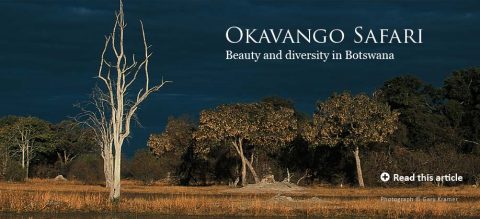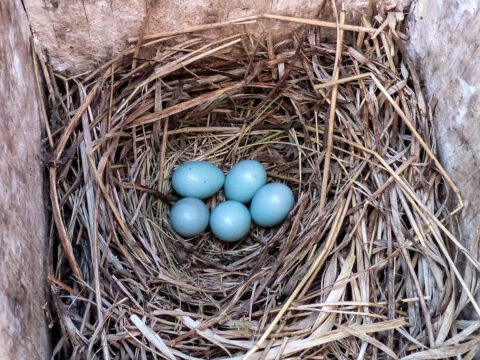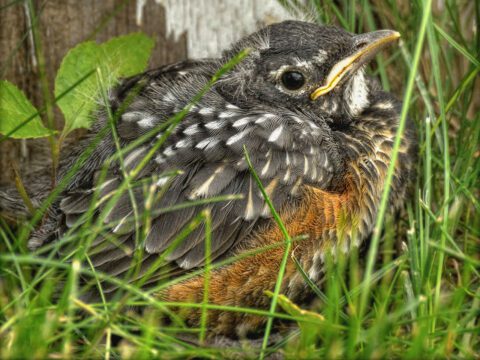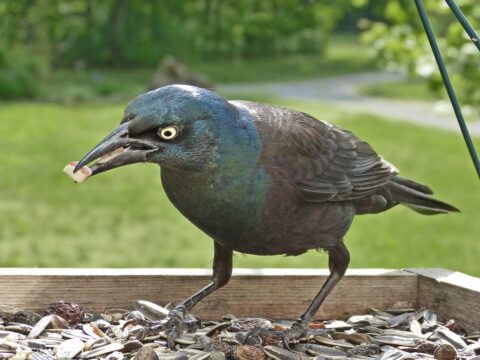Frequent Flyers: Yellow-rumped Warblers and the Goal of Keeping Common Birds Common
By David S. Wilcove January 15, 2009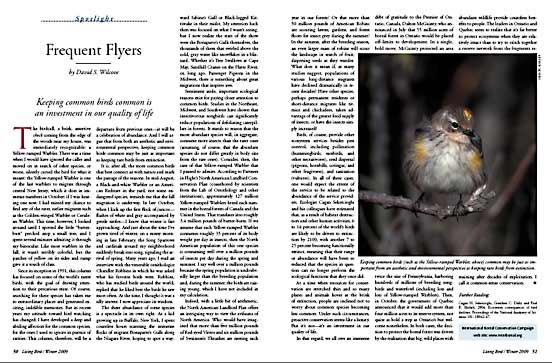
The birdcall, a brisk, assertive check coming from the edge of the woods near my house, was immediately recognizable: a Yellow-rumped Warbler. There was a time when I would have ignored the caller and moved on in search of other species, or worse, silently cursed the bird for what it meant: the Yellow-rumped Warbler is one of the last warblers to migrate through central New Jersey, which it does in immense numbers in October; if I was hearing one now, I had missed my chance to find any of the rarer, earlier migrants such as the Golden-winged Warbler or Cerulean Warbler. This time, however, I looked around until I spotted the little “butter-butt” perched atop a small tree, and I spent several minutes admiring it through my binocular. Like most warblers in the fall, it wasn’t terribly colorful, but the patches of yellow on its sides and rump gave it a touch of class.
Since its inception in 1991, this column has focused on some of the world’s rarest birds, with the goal of drawing attention to their precarious state. Of course, searching for these species has taken me to extraordinary places and generated exciting, indelible memories. But in recent years my attitude toward bird watching has changed; I have developed a deep and abiding affection for the common species, for the ones I used to ignore in pursuit of rarities. This column, therefore, will be a departure from previous ones—it will be a celebration of abundance. And I will argue that from both an aesthetic and environmental perspective, keeping common birds common may be just as important as keeping rare birds from extinction.
It is, after all, the more common birds that best connect us with nature and mark the passage of the seasons. In mid-August, a Black-and-white Warbler or an American Redstart in the yard, not some endangered species, reminds me that the fall migration is underway. In late October, when I kick up the first flock of juncos—flashes of white and gray accompanied by gentle rattles—I know that winter is fast approaching. And just about the time I’ve grown tired of winter, on a sunny morning in late February, the Song Sparrows and cardinals around my neighborhood suddenly break into song, signaling the arrival of spring. Many years ago, I read an interview with the venerable ornithologist Chandler Robbins in which he was asked what his favorite birds were. Robbins, who has studied birds around the world, replied that he liked best the birds he saw most often. At the time, I thought it was a silly answer. I now appreciate its wisdom.
The sheer abundance of some species is a spectacle in its own right. As a kid growing up in Buffalo, New York, I spent countless hours scanning the immense flocks of migrant Bonaparte’s Gulls along the Niagara River, hoping to spot a wayward Sabine’s Gull or Black-legged Kittiwake in their midst. My attention back then was focused on what I wasn’t seeing, but I now realize the stars of the show were the Bonaparte’s Gulls themselves, the thousands of them that swirled above the cold, gray water like snowflakes in a blizzard. Whether it’s Tree Swallows at Cape May, Sandhill Cranes on the Platte River, or, long ago, Passenger Pigeons in the Midwest, there is something about great migrations that inspires awe.
Sentiment aside, important ecological reasons exist for paying closer attention to common birds. Studies in the Northeast, Midwest, and Southwest have shown that insectivorous songbirds can significantly reduce populations of defoliating caterpillars in forests. It stands to reason that the more abundant species will, in aggregate, consume more insects than the rarer ones (assuming, of course, that the abundant species do not differ greatly in body size from the rare ones). Consider, then, the case of that Yellow-rumped Warbler that I paused to admire. According to Partners in Flight’s North American Landbird Conservation Plan (coauthored by scientists from the Lab of Ornithology and other institutions), approximately 127 million Yellow-rumped Warblers breed each summer in the boreal forests of Canada and the United States. That translates into roughly 3.4 million pounds of butter-butts. If we assume that each Yellow-rumped Warbler consumes roughly 35 percent of its body weight per day in insects, then the North American population of this one species is consuming well over a million pounds of insects per day during the spring and summer. I say well over a million pounds because the spring population is undoubtedly larger than the breeding population and, during the summer, the birds are raising young, which I have not included in my calculation.
Indeed, with a little bit of arithmetic, the North American Landbird Plan offers an intriguing way to view the avifauna of North America. Who would have imagined that more than five million pounds of Red-eyed Vireos and six million pounds of Swainson’s Thrushes are nesting each year in our forests? Or that more than 50 million pounds of American Robins are scouring lawns, gardens, and forest floors for insect prey during the summer? In the autumn, after the breeding season, an even larger mass of robins will scour the landscape in search of fruit, dispersing seeds as they wander. What does it mean if, as many studies suggest, populations of various long-distance migrants have declined dramatically in recent decades? Have other species, perhaps permanent residents or short-distance migrants like titmice and chickadees, taken advantage of the greater food supply of insects, or have the insects simply increased?
Birds, of course, provide other ecosystem services besides pest control, including pollination (hummingbirds, sunbirds, and other nectarivores), seed dispersal (pigeons, hornbills, cotingas, and other frugivores), and sanitation (vultures). In all of these cases, one would expect the extent of the service to be related to the abundance of the service providers. Ecologist Cagan Sekercioglu and his colleagues have estimated that, as a result of habitat destruction and other human activities, 6 to 14 percent of the world’s birds are likely to be driven to extinction by 2100, with another 7 to 25 percent becoming functionally extinct, meaning that their range or abundance will have been so reduced that the species in question can no longer perform the ecological functions that they once did.
At a time when resources for conservation are stretched thin and so many plants and animals hover at the brink of extinction, people are inclined not to worry about common species becoming less common. Under such circumstances, proactive conservation seems like a luxury. But it’s not—it’s an investment in our quality of life.
In that regard, we all owe an immense debt of gratitude to the Premier of Ontario, Canada, Dalton McGuinty, who announced in July that 55 million acres of boreal forest in Ontario would be placed off-limits to development. In a single, bold move, McGuinty protected an area twice the size of Pennsylvania, harboring hundreds of millions of breeding songbirds and waterfowl (including lots and lots of Yellow-rumped Warblers). Then, in October, the government of Quebec announced that it would add more than four million acres to its reserve system, not quite as bold a step as Ontario’s but welcome nonetheless. In both cases, the decision to protect the boreal forest was driven by the realization that big, wild places with abundant wildlife provide countless benefits to people. The leaders in Ontario and Quebec seem to realize that it’s far better to protect ecosystems when they are relatively intact than to try to stitch together a reserve network from the fragments remaining after decades of exploitation. I call it common-sense conservation.

All About Birds
is a free resource
Available for everyone,
funded by donors like you
American Kestrel by Blair Dudeck / Macaulay Library
